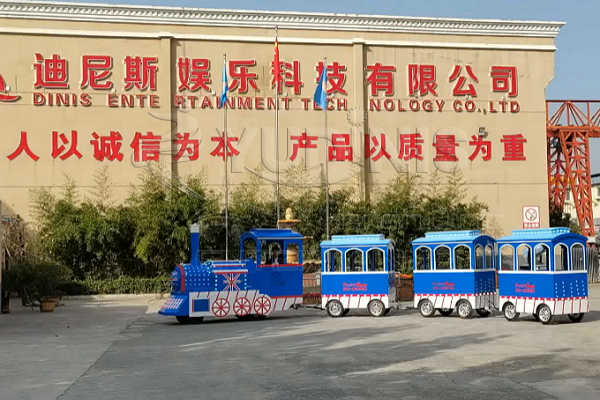When it comes to choosing the right power source for carnival trains, the decision between electric and diesel power can significantly impact the performance, cost, and ecological footprint of the ride. As a leading supplier in the amusement ride industry, Dinis Amusement Ride Supplier is dedicated to helping you make an informed decision that aligns with your operational needs and sustainability goals. In this blog, we’ll explore the key considerations to help you decide between electric and diesel power for your carnival trains.

Environmental Impact
Electric Power: A Greener Choice
Electric trains have gained popularity due to their minimal environmental impact. They produce zero emissions at the point of use, reducing air pollution and making them an excellent choice for environmentally-conscious operators. This is particularly beneficial in urban or enclosed environments where air quality is a concern. Furthermore, as renewable energy sources become more prevalent, the overall carbon footprint of electric-powered rides continues to decrease.
Diesel Power: Traditional but Polluting
Diesel trains have been a long-standing choice due to their robust performance. However, they emit greenhouse gases and particulate matter, contributing to air pollution and climate change. While advancements in diesel engine technology have reduced emissions, they still lag behind electric alternatives in terms of environmental sustainability.
Cost Considerations
Initial Investment and Operational Costs
Electric trains generally have a higher initial cost due to the price of electric motors and battery systems. However, they benefit from lower operational costs since electricity is often cheaper than diesel fuel. Additionally, electric trains have fewer moving parts, resulting in reduced maintenance expenses over time.
Conversely, diesel trains may have a lower initial purchase price but incur higher fuel and maintenance costs. The need for regular engine servicing and potential engine overhauls can add to the long-term operational expenses.

Performance and Reliability
Electric Trains: Quiet and Efficient
Electric carnival riding trains are known for their quiet operation and smooth acceleration, enhancing the overall ride experience for passengers. They offer reliable performance with minimal downtime, making them suitable for continuous operation during carnival events. However, the range and running time can be limited by battery capacity, necessitating careful planning for charging.
Diesel Trains: Power and Range
Diesel trains are celebrated for their powerful engines and impressive range, making them ideal for longer tracks or rides with steep inclines. They can operate for extended periods without refueling, which is advantageous for events with high passenger turnover. However, the noise and vibrations from diesel engines can be a drawback in certain settings.
Infrastructure and Availability
Charging vs. Fueling
Electric trains require charging infrastructure, which may involve additional investment in charging stations and grid upgrades. The availability of charging facilities is crucial, especially in remote or underserved areas. On the other hand, diesel fuel is widely available, and refueling stations are more common, offering flexibility in various locations.
Conclusion: Making the Right Choice
Choosing between electric and diesel power for entertainment train carnival rides depends on several factors, including environmental goals, budget constraints, performance needs, and infrastructure availability. As a trusted partner in the amusement ride industry, Dinis Amusement Ride Supplier recommends a thorough assessment of your specific requirements and long-term objectives. By doing so, you can ensure that your investment aligns with your operational demands and sustainability commitments, delivering an exceptional experience for your patrons while minimizing your environmental impact.
Click here to know more about Dinis carnival train rides for sale: